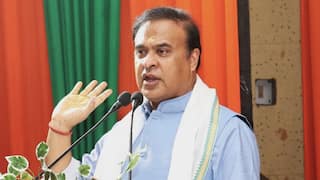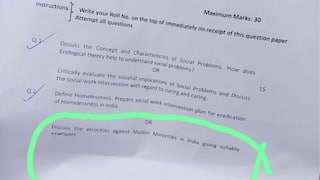India's GDP Expected To Grow At 9.2 Per Cent in FY22: Govt
Real GVA at Basic Prices is estimated at Rs 135.22 lakh crore in 2021-22, as against Rs 124.53 lakh crore in 2020-21, showing growth of 8.6 per cent, according to the NSO

New Delhi: India’s GDP (gross domestic product) estimated to grow at 9.2 per cent in FY22, as against a contraction of 7.3 per cent in the previous fiscal, mainly due to improvement in the performance of agriculture and manufacturing sectors, the National Statistical Office (NSO) said on Friday.
The NSO, after releasing the first advance estimates of National Income for 2021-22, said, “The growth in real GDP during 2021-22 is estimated at 9.2 per cent as compared to the contraction of 7.3 per cent in 2020-21.”
“Real GVA at Basic Prices is estimated at Rs 135.22 lakh crore in 2021-22, as against Rs 124.53 lakh crore in 2020-21, showing growth of 8.6 per cent,” NSO added.
The expansion of the GDP is, however, lower than that forecast by the Reserve Bank of India (RBI). The central bank had last month reiterated its GDP growth forecast of 9.5 per cent for FY22.
ALSO READ | Closing Bell: Sensex Ends 143 Points Higher, Nifty At 17,813
Advance estimates are released to provide the numbers to the finance ministry to work on the Budget for the next financial year.
According to a forecast of a domestic rating agency, the Omicron variant spread would impact the January-March quarter GDP by 0.40 per cent and shave off 0.10 per cent from the FY22 growth, as many states resort to restrictions to limit infections.
“Curbs in various forms such as reducing the capacity of market/market complexes and night/weekend curfews to check human mobility/contact have already started in several states, which are impacting economic activities,” India Ratings and Research said in a note.
The revision in estimates comes amid a massive surge in Covid infections across the country, especially in the metro. A majority of the new cases are suspected to be that of the Omicron variant of the coronavirus, which is suspected to be spreading fast and also evades prior vaccinations.
Indications so far suggest that the infections are milder and mostly not life-threatening, the rating agency said, adding that the curbs imposed by local governments will be less disruptive than those during the first two waves.
The economy will bounce back pretty quickly once the third wave subsides, according to the report.
Policy support, both monetary and fiscal, would be “critical” till the threat of pandemic continues and the economy reaches the stage of a sustained growth trajectory, it added.
Despite the ongoing recovery, select high-frequency indicators, such as the Index of Industrial Production, are showing that the industrial output levels are still lower than pre-Covid levels, it said.
According to agency, it expects the RBI to continue with its accommodative policy stance with no change in the policy rate in the “foreseeable future” and the Centre will not be in a hurry to get back to the fiscal consolidation path.






































